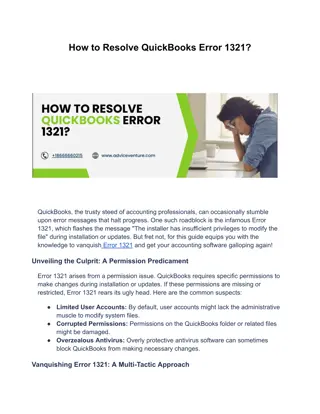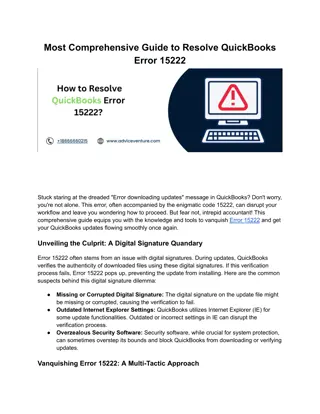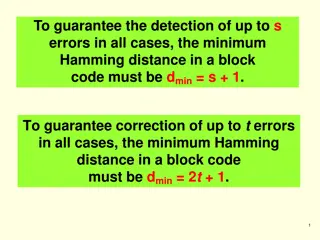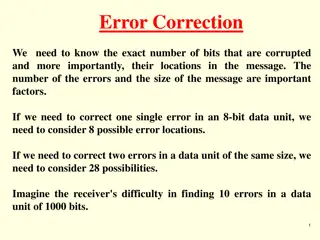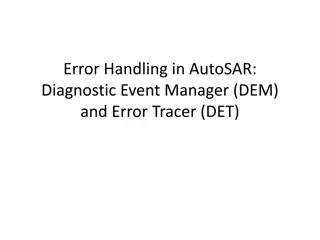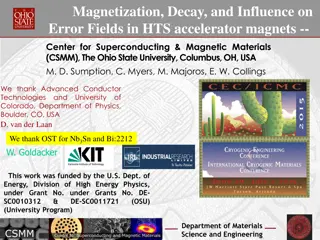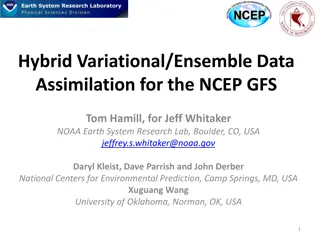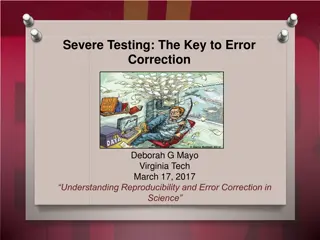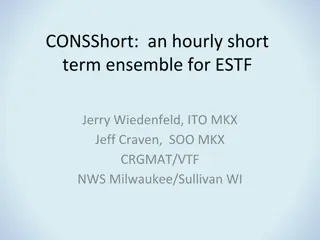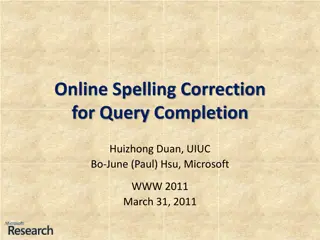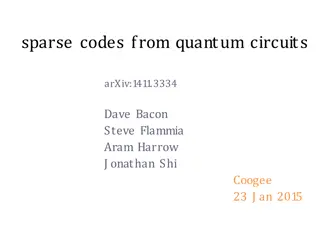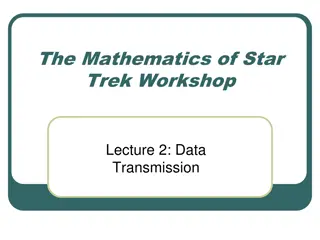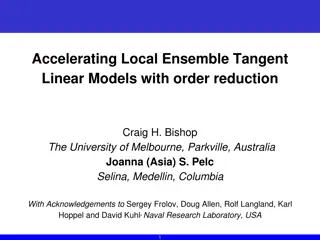Enhancing Error Correction Models with Ensemble Methods
This content explores the use of ensemble methods to improve error correction models, discussing various techniques such as preprocessing, postprocessing, synthetic data generation, and pipeline ensembles. It delves into the application of different models, corrections of various error types, and the significance of ensemble strategies in enhancing precision and model performance.
Download Presentation

Please find below an Image/Link to download the presentation.
The content on the website is provided AS IS for your information and personal use only. It may not be sold, licensed, or shared on other websites without obtaining consent from the author.If you encounter any issues during the download, it is possible that the publisher has removed the file from their server.
You are allowed to download the files provided on this website for personal or commercial use, subject to the condition that they are used lawfully. All files are the property of their respective owners.
The content on the website is provided AS IS for your information and personal use only. It may not be sold, licensed, or shared on other websites without obtaining consent from the author.
E N D
Presentation Transcript
Baseline Models </s> Encoder Decoder Task: <s> Input: erroneous sentence ? = ?1,?2, ,?? R- A- K K A- Target: correct sentence ? = ?1,?2, ,?? Seq2seq model: Encoder ??(??|?<?,?) ? ? ? = ?=1 initialized by BART-base-chinese Seq2edit model: ? ? ? ? = ? ? ? = ?=1 ?(??|?) initialized by StructBERT-large-chinese
Preprocess & Postprocess Substitute [unused] token in BERT vocabulary into Chinese punctuation. 313 / 914 tokens in test-1 / test-s2 Cut sentences into pieces based on punctuations before sending it into model. Average length of training / test-s1 (split) / test-s2 (split) input: 23.7 / 38.5 ( 45.1 ( 20.7) tokens 30.0) / Small improvement on NLPCC-2014 (+0.4 BART-large) Great improvement on others
Preprocess & Postprocess Replace [UNK] or English words in generated sentence with original words in input sentence according to Levenstein distance. Package: difflib (SequenceMatcher) Find substitution: src_part tgt_part CASE-1: tgt_part == [UNK] CASE-2: tgt_part is a English word and tgt_part.lower() == src_part.lower() Unnecessary substitution: 20+ / 110+ in test-s1 / test-s2 +0.7 / +0.8 precision in test-s1 / test-s2
Synthetic Data Corpus: THUCNews Original: 740,000 documents from 14 news categories Selected: 5 million sentences Corruption Methods: For suitable sentences: 50% sentence-level noise 50% other For n-grams in other sentences: 50% word-level 50% char-level Significant improve on recall
Ensemble methods Motivation: Different models are good at correcting different types of errors Improve precision (to improve ?0.5 score) Edit-level vote ???? = ?????_???,???_???,?????? (usually) ? ??? ??? #? ?? ?????? 2 Conflict resolution Pipeline ensemble
Pipeline Ensemble Same type of models: Similar decisions Seq2seq + seq2edit: Different decisions Pretrain: Prefer to do more editing operation Difference decision facing the same input
Performance Emb-i = BART-i + GECTOR-i Num = 2, threshold = 2 PipeEmb-i = ensemble of Embs Num = n, threshold = 1 PipeEmb-3: Emb-1 2 4 PipeEmb-4: Emb-1 2 4 5 Trade-off between precision and recall
Others Data augmentation: dropout-src, MaskGEC, Methods: improve the performance of single model, but higher overlap (over 80%) Usage of PLM: Select the most fluent sentence (evaluated by PPL) from candidates. not so good Select the most appropriate edits (evaluated by PPL) from candidates. not so good Select the worst edits (evaluated by change of PPL) from the whole generated sentence. tradeoff between precision and recall




